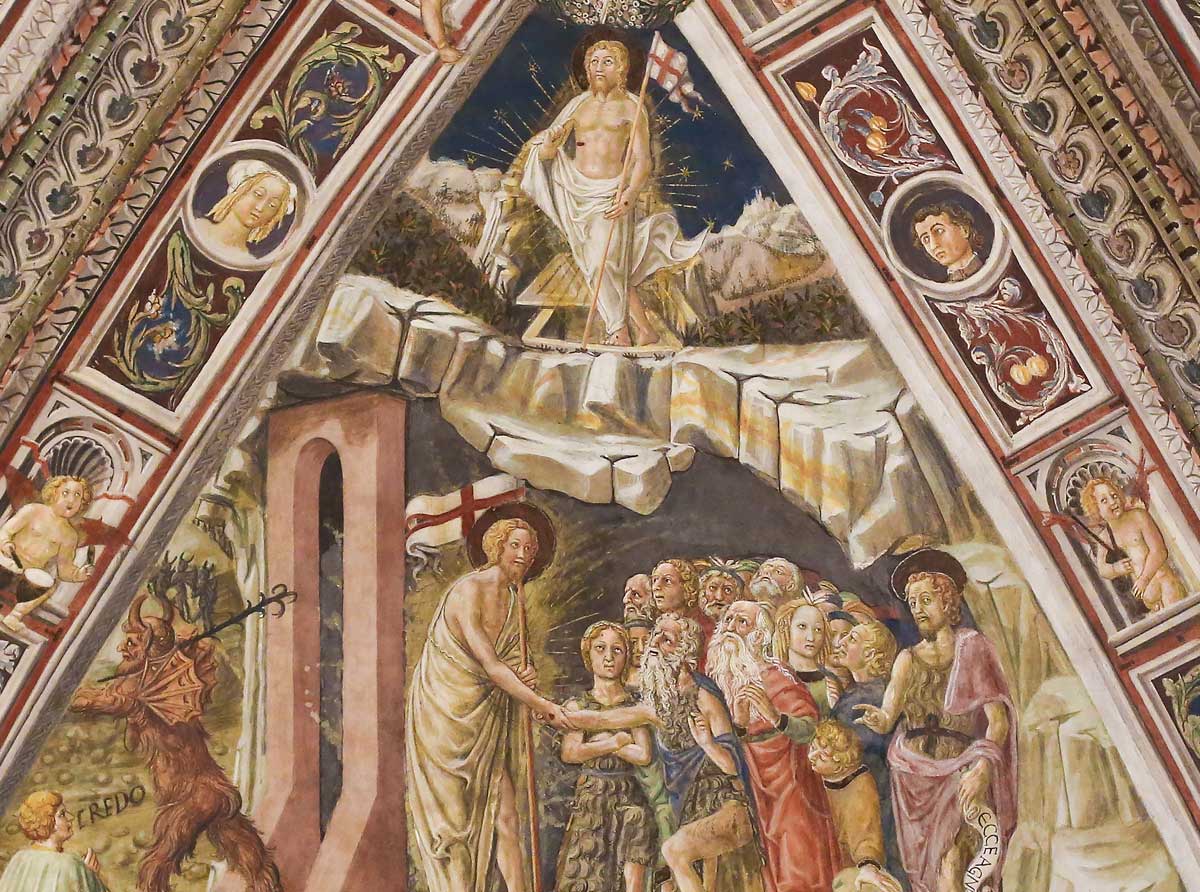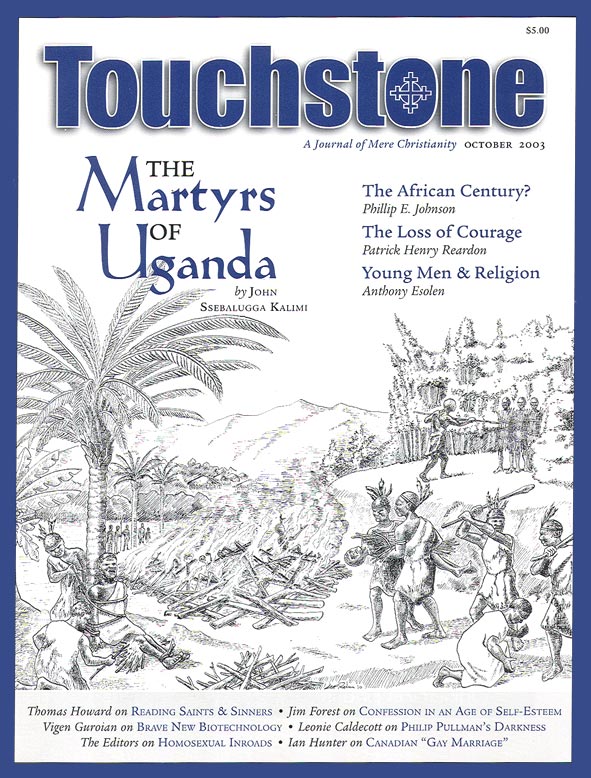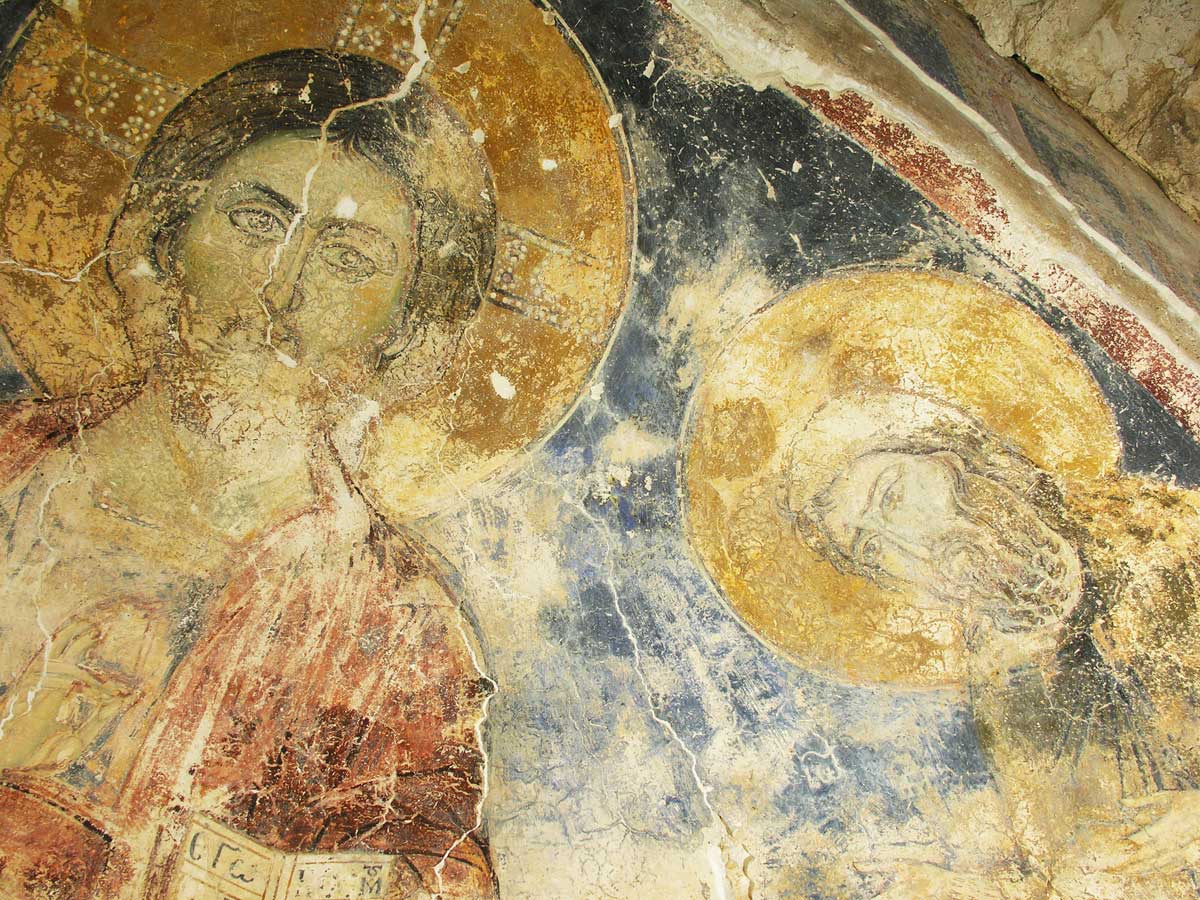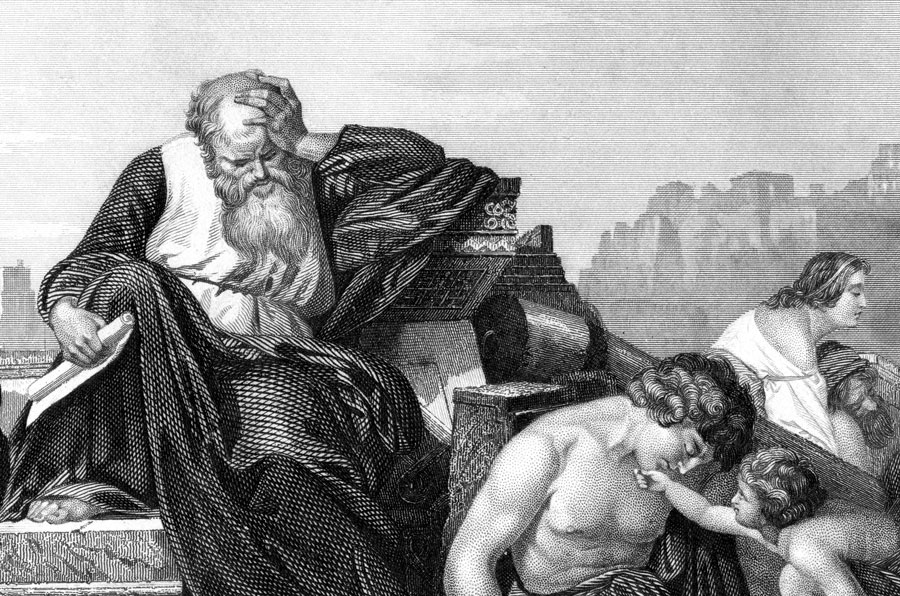The Wages of Reading
Thomas Howard on the Literature of Saints & Sinners
A school friend of mine, whom I have not seen for 45 years, recently sent me a sheaf of articles from The Atlantic Monthly, to which he appears to subscribe. Actually, they were book reviews, but of article-length. I found myself galvanized by all of them. They were almost all reviews of recent literary biographies—Evelyn Waugh, Upton Sinclair, Mary McCarthy, H. L. Mencken, Kingsley Amis—that sort of thing.
I began with the Waugh review, since Waugh is a favorite of mine, and I happen to be on his side on every possible topic: manners, the aristocracy, the collapse of civilization, Roman Catholic orthodoxy, bores. I cordially disagreed with the reviewer of the book in question, who clearly was unsympathetic to Waugh’s ferocious religious and social outlook. But never mind that.
The reviews that began really to engage my attention were those that concerned themselves with Samuel Pepys (pronounced Peeps, if your seventeenth-century English studies have gone a bit rusty), the enfant terrible of diarists; Lord Byron, the sensationally romantic figure whose life was at least as fantastic as his poetry; and Oscar Wilde, the acidulous epigrammatist of the late nineteenth century who ended up in jail for having sued for libel the Marquess of Queensberry, who accused Wilde of sodomy (or, as we would more delicately say nowadays, of having an affair) with the marquess’s son, Lord Alfred Douglas. Wilde, as readers will all remember, lost the case (the marquess’s charges were true, alas), and went to jail (gaol in English) for two years, and died miserably four years after his release, in 1900.
Swept Away
I was quite swept away as I read these three articles. I mean, here is Pepys, simply writing down every little thing of every day of his life in the London of Charles II. His shoes, his socks, his maid, his food (mustard and tripe was a favorite dish of his), his “going abroad” (walking) in the streets of a London, which, by the way, in his day stretched only from the Tower to Park Lane, and from Oxford Street to the Thames. (Obviously, things had begun to spill over into the fields a bit.)
Nothing is of no interest to him. Critics have scratched their beards over the question as to just wherein we are to say the genius of all this lies. But genius it seems to be. Of course, we are also regaled with the most clinical, or shall we say leering, scrutiny, not only of all of his (daily?) fornication, but of every scrofulous pustule, wen, follicle, boil, carbuncle, and septic outcropping on every square inch of his and his ladies’ bodies. For a mid-Victorian like me, the whole thing is beyond unspeakable. And there are no smallest details of the scatological aspects of our mortality upon which he does not descant with the greatest zest.
But on the other hand, Pepys has given us probably the best descriptions of the Plague of 1664–1665 (not to be confused with Defoe’s Journal of the Plague Year, on the same disaster, but published in 1722) that have ever been written, and also of the Great Fire of London in 1666. On this latter topic we do, in fact, glimpse details that reveal Pepys’s great and sympathetic heart. After telling about the poor people struggling down the steps of the Embankment with what belongings they could salvage, into boats on the river, he then tells us about the “poor pigeons” who, nonplussed by the conflagration, do not have the sense to leave their perches, and some of whom consequently find their wings burned up, and fall to the ground to die.
Well. So much for Pepys, for the moment. He is a “figure” in English literature, and has a firm place in the “canon.” What about Byron? He, of course, is a colossus, in all senses of the word. He was beautiful, titled, dashing, insatiably adventurous (not to say reckless), restless, brave (although he never actually fought in a battle, much as he tried), and lecherous. He married, but seems to have spent the rest of his days ravishing both boys and women. His interminable poems—Childe Harold’s Pilgrimage, Manfred, Don Juan (pronounced, by the way, Joo-un, by academics), Mazeppa, The Giaour—where shall we stop?—extol the super-romantic ideal of the bold, brave, dashing, wildly colorful young man who ravens down (short a there, like Claudio’s rats in Measure for Measure) all conceivable experiences like so much ale. It is all quite breathtaking and intoxicating, and is likely to make one look at one’s own demure, not to say drab, existence, and think, “Life is passing me by.”
And then we have Oscar Wilde. Actually, when it comes down to it, he is not much of a literary figure, if we are speaking of major English authors. He didn’t write much that was good. Oh, to be sure, The Importance of Being Earnest (which Wilde was not) will last forever, and rightly too. And “The Ballad of Reading Gaol” is deeply moving. But The Picture of Dorian Gray cannot be held to be among the great English novels. And most of the rest of Wilde’s oeuvre has sunk from view.
We all think of Wilde, of course, as being diabolically witty. Here again, rightly so. He could toss off, at the smallest provocation—or without provocation, for that matter—some of the funniest and most withering obiter dicta ever uttered by man. In his heyday he was lionized by the rich and fashionable, especially hostesses. And at Oxford he cut a bizarre figure, quite ostentatiously and calculatedly, by the clothes he chose to wear. He is, no doubt, the original of Gilbert and Sullivan’s Bunthorne, in Patience—your archetypal aesthete—epicene, effete, affected, and suave.
As is the case with both Pepys and Byron, we find ourselves electrified by reading, not only what these gentlemen wrote, but also about them. Shelves of books have been written about all three of them. How can one resist the wit, the effortless urbanity, the lust for life, the drollery, and the sheer êlan vital radiating from this trio? Such fun!
A Question
But. And here is where I found myself, two or three days after the fact, raising a question. It is the sort of question that would interest neither The Atlantic Monthly nor its readers. It arises from some other reading I have been doing. As a Roman Catholic, I read the breviary and the Office of Readings daily. Here I find myself awash in the Psalms. These poets (I grew up to believe that David wrote most of them, and still do, I suppose) were wholly engaged in matters that seem to have escaped Pepys, Byron, Wilde, their biographers, the critics, and the terribly civilized readers of The Atlantic.
They struggled, and cried out, even bellowed, to heaven, over their sins, and over God’s wrath, and over matters like grief and death and sickness. And they scrutinized, with myopic punctilio, the smallest matters of virtue: Have I been straightforward with my neighbor? Have I spoken ill of him? Am I guilty of a vituperative spirit? Are my hands clean? Is my spirit pure? When shall I come into the presence of God? Oh, how I love God’s house. One thing have I desired of Thee. . . .
And all of this turns out to be of one fabric with what we come upon in the Sermon on the Mount: very drab concerns, from your Pepysian, Byronic, Wildean point of view. Being pure in heart; being poor in spirit; being merciful; hungering for righteousness. Not to mention the various lists put forward by St. Paul in 1 Corinthians 13, and Galatians 5: love (not Byron’s notion), joy, peace, longsuffering, gentleness, goodness, faith, meekness, self-control. And so forth and so forth. Pretty dull stuff, by Atlantic standards.
I happen also to be reading the Roman Martyrology—or, more specifically, Butler’s magisterial Lives of the Saints. Here you have anywhere from six to fifteen saints’ lives for every one of the 365 days of the year. Oh, to be sure, there is lots of legend there. But Butler, or at least his later editors, Thurston and Attwater, is scrupulous about differentiating between cold history and “pious legend.” On the other hand, I am the sort who does not boggle when I read in the Venerable Bede, or in Jacobus de Voragine’s Legenda Aurea, about the dust on which had been poured water in which some saint’s bones had been washed bringing healing to some leper. I mean, hankies went out from St. Paul with healing virtue, forsooth.
Who is to say that the Holy Ghost stopped everything at the end of Acts 28? I love old Sir Thomas Browne who, though “I am of that Reformed new-cast Religion,” nevertheless said,
I am, I confess, naturally inclined to that which misguided Zeal terms Superstition. . . . at my Devotion I love to use the civility of my knee, my hat, and hand. . . . I should violate my own arm rather than a Church; nor willingly deface the name of Saint or Martyr. At the sight of a Cross or Crucifix I can dispense with my hat. . . . ( Religio Medici). I find that same frame of mind at work when I read all of these saints’ lives.
I am also reading at present, Eleanor Shipley Duckett’s The Wandering Saints of the Early Middle Ages. These men and women (Patrick, Columba, Columban, Fursey, Boniface, Willibrord, et al.) could scarcely turn around without some miracle popping up. Once a granite outcropping rearranged itself into a seat so that two pilgrim saints would be a bit more comfortable. This will not wash in the pages of The Atlantic. And the votaries of Pepys, Byron, and Wilde are far more interested in the pustules in the groin of their women (or boys) than in gentleness, goodness, meekness, temperance, faith.
Interesting Distractions
Interested. I think that is the key word. What interests me? I wonder whether, insofar as I pursue the foxfires that flit through my brain in the wake of Byron & co., I am not to that extent “distracted from distraction by distraction” (Eliot, Four Quartets). When I read St. Francis de Sales’s Introduction to the Devout Life, or Pascal’s Pensees (I keep a copy by my desk, and read a few while I wait for my antiquated computer to crank on to AOL and get itself on-line and get my e-mail), or the Imitatio Christi (this is by my phone: it takes forever to get messages off), I find that the older I get, the more riveting this stuff is.
My grave yawns somewhere here ahead of me. Today? Tomorrow? Another aeonian thirty years (I’d be 98)? When the Angel of Death with his scythe looms blackly in my door, what will I wish I had had my mind on?
Readers will justifiably be thinking to themselves by this time, “Heigh-ho! What sort of wannabe saint is this man? I mean—surely we can enjoy theater and ballet and poetry and Broadway and travel and good wine and feasting and badinage? Are we all to drop to our knees like Carthusians or Cistercians, on freezing stone floors? Come.”
Touché. I have a confession. I made my livelihood for forty years teaching English literature. Byron and all. What about that? Was I leading my students down a primrose path?
I don’t think so. I did, actually, have a most excellent teacher of Victorian literature at Wheaton College, fifty years ago, who left teaching to write Sunday School materials because she could not in conscience go on teaching Ruskin, Pater, Swinburne, and Wilde. Well, that’ll show up on her account at the Divine Tribunal as possibly a plus. I don’t know. I did not do that. I loved my teaching. Even Chaucer’s bawdy.
Perhaps it is a matter of what finally engages us, and what constitutes “the still point of the turning world” for us. Byron does not help me here. Is he all right for study? I could argue the case either way. But I do know one thing: The Romantic Ideal will send you to hell eventually. Luxuriating in fornication and sodomy will, too. The modern world (partly fed by The Atlantic Monthly) pursues materials in this connection with the most sober assiduity. Do we (Christians) demur somewhere in here? How countercultural are we?
Here is where a finely tuned question arises. What, we might ask, constitutes the watershed between an interest in, not to say a fascination with, the lurid and the titillating (“Oh—fancy this! Byron was a pederast into the bargain! This calls for an article!” And so forth and so forth) and a greater interest in the annals of sanctity? A most piquant question. It is not only the glossy magazines and tabloids that flourish on this. The most desiccated of scholars, and certainly the most dedicated of biographers and critics, not to say the pundits and armchair Freudians, not to mention thee and me—all of us have to admit that wickedness, recklessness, disorder, and the bold flouting of convention and “society’s taboos” give us a great frisson.
A Taste for Sanctity
Before it is too late, should we, and if so, how are we to, develop a “taste” for the annals of sanctity? And will there come, at last, an actual preference for these over the topics that fill the columns, again, not only of the cheap magazines in the airport racks, but also of the highbrow journals? (It is not all, of course, scandal: but totally godless respectability—Virginia Woolf, say—holds the field, surely, over the narratives of souls struggling towards God.)
There is not much modern literature that bespeaks what I am talking about. In our own time, I can think principally of Eliot’s Four Quartets and Evelyn Waugh’s Brideshead Revisited. Both, it may be remarked, have suffered a certain amount of obloquy at the hands of the critics and graduate English departments, since they are such objectionably Christian tracts, so to speak. Eliot got a lot of the “poor old Tom” sort of thing, and people seem to balk at Charles Ryder’s conversion as the thing that eventually spoils Brideshead.
Well, then, we may all remark (testily): Do you want us to jettison our libraries and take up hagiography alone? No. But the question of what interests me, finally, lurks.
A question to throw us all into a brown study.
Thomas Howard taught for many years at St. John's Seminary College, the Roman Catholic seminary of the archdiocese of Boston. Among his many works are the books Christ the Tiger, Evangelical Is Not Enough, Lead Kindly Light, On Being Catholic, and The Secret of New York Revealed, and a videotape series of 13 lectures on "The Treasures of Catholicism" (all from Ignatius Press).
subscription options
Order
Print/Online Subscription

Get six issues (one year) of Touchstone PLUS full online access including pdf downloads for only $39.95. That's only $3.34 per month!
Order
Online Only
Subscription

Get a one-year full-access subscription to the Touchstone online archives for only $19.95. That's only $1.66 per month!
bulk subscriptions
Order Touchstone subscriptions in bulk and save $10 per sub! Each subscription includes 6 issues of Touchstone plus full online access to touchstonemag.com—including archives, videos, and pdf downloads of recent issues for only $29.95 each! Great for churches or study groups.
Transactions will be processed on a secure server.
more from the online archives

14.6—July/August 2001
The Transformed Relics of the Fall
on the Fulfillment of History in Christ by Patrick Henry Reardon
calling all readers
Please Donate
"There are magazines worth reading but few worth saving . . . Touchstone is just such a magazine."
—Alice von Hildebrand
"Here we do not concede one square millimeter of territory to falsehood, folly, contemporary sentimentality, or fashion. We speak the truth, and let God be our judge. . . . Touchstone is the one committedly Christian conservative journal."
—Anthony Esolen, Touchstone senior editor








